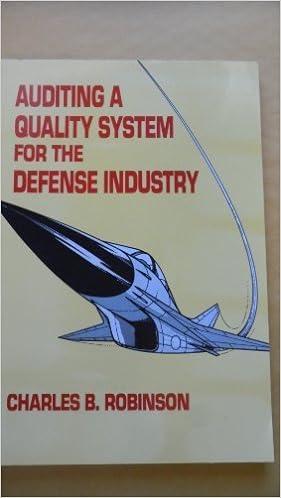


8. Using regression adjustments to estimate the effects of policy intervention Suppose you want to examine the effects of a job training program, and estimate the following regression model to do so: earn98=4.6+2.5train+0.34earn96+0.35educ0.2age+2.3married where earn 98= labor market earnings in 1998, in thousands of dollars train =1 if the employee participated in the training program, and =0 otherwise earn 96= labor market earnings in 1996 (the year before the training program), in thousands of dollars educ= years of schooling age= age, in years married =1 if the employee is married, and =0 otherwise n=1,120R2=0.42 Using unrestricted regression adjustment, which of the following best represents the estimated equation with full interactions? earn98=5.3+3.2 train +0.33 earn 96+0.37 educ 0.2 age +3 married +0.13 train ( earn 96earn96)+0.036 train ( educ educ)+0.053 train ( age age)+1.15 train earn98=5.3+3.2 train +0.33 earn 96+0.37educ0.2age+3 married +0.13 train (educeduc)+0.036 train (educeduc)+0.053 train (educeduc)+1.15 train earn98=5.3+3.2 train +0.33 earn 96+0.37 educ 0.2 age +3 married +0.13 train ( age age)+0.036 train ( age age)+0.053 train ( age age)+1.15 train ( age a earn98=5.3+3.2 train +0.33 earn 96+0.37 educ 0.2 age +3 married +0.13 train ( earn 96earn96)+0.036 train ( earn96 earn96)+0.053 train ( earn 96earn96) Using your answer from the preceding question, the estimated average treatment effect of the training program is ura= Which of the following best represents the meaning of the estimated average effect of the training program? The training program led to an increase in 1998 earnings of $3,200. The training program led to a decrease in 1998 earnings of $5,300. The training program led to an increase in 1998 earnings of $330. The training program led to an increase in 1998 earnings of $130. ustment, which of the following best represents the estimated equation with full interactions? n+0.33 earn 96+0.37 educ 0.2 age +3 married +0.13 train ( earn 96earn96)+0.036 train ( educ educ)+0.053 train ( age age)+1.15 train ( married married) n+0.33earn96+0.37educ0.2age+3 married +0.13 train (educeduc)+0.036train(educeduc)+0.053 train (educeduc)+1.15 train (educeduc) n+0.33 earn 96+0.37educ0.2 age +3 married +0.13 train ( age age)+0.036 train ( age age)+0.053 train ( age age)+1.15 train ( age age) n+0.33 earn 96+0.37 educ 0.2 age +3 married +0.13 train ( earn 96earn96)+0.036 train ( earn96 earn96)+0.053 train ( earn96 earn96)+1.15 train ( earn96 earn96) 8. Using regression adjustments to estimate the effects of policy intervention Suppose you want to examine the effects of a job training program, and estimate the following regression model to do so: earn98=4.6+2.5train+0.34earn96+0.35educ0.2age+2.3married where earn 98= labor market earnings in 1998, in thousands of dollars train =1 if the employee participated in the training program, and =0 otherwise earn 96= labor market earnings in 1996 (the year before the training program), in thousands of dollars educ= years of schooling age= age, in years married =1 if the employee is married, and =0 otherwise n=1,120R2=0.42 Using unrestricted regression adjustment, which of the following best represents the estimated equation with full interactions? earn98=5.3+3.2 train +0.33 earn 96+0.37 educ 0.2 age +3 married +0.13 train ( earn 96earn96)+0.036 train ( educ educ)+0.053 train ( age age)+1.15 train earn98=5.3+3.2 train +0.33 earn 96+0.37educ0.2age+3 married +0.13 train (educeduc)+0.036 train (educeduc)+0.053 train (educeduc)+1.15 train earn98=5.3+3.2 train +0.33 earn 96+0.37 educ 0.2 age +3 married +0.13 train ( age age)+0.036 train ( age age)+0.053 train ( age age)+1.15 train ( age a earn98=5.3+3.2 train +0.33 earn 96+0.37 educ 0.2 age +3 married +0.13 train ( earn 96earn96)+0.036 train ( earn96 earn96)+0.053 train ( earn 96earn96) Using your answer from the preceding question, the estimated average treatment effect of the training program is ura= Which of the following best represents the meaning of the estimated average effect of the training program? The training program led to an increase in 1998 earnings of $3,200. The training program led to a decrease in 1998 earnings of $5,300. The training program led to an increase in 1998 earnings of $330. The training program led to an increase in 1998 earnings of $130. ustment, which of the following best represents the estimated equation with full interactions? n+0.33 earn 96+0.37 educ 0.2 age +3 married +0.13 train ( earn 96earn96)+0.036 train ( educ educ)+0.053 train ( age age)+1.15 train ( married married) n+0.33earn96+0.37educ0.2age+3 married +0.13 train (educeduc)+0.036train(educeduc)+0.053 train (educeduc)+1.15 train (educeduc) n+0.33 earn 96+0.37educ0.2 age +3 married +0.13 train ( age age)+0.036 train ( age age)+0.053 train ( age age)+1.15 train ( age age) n+0.33 earn 96+0.37 educ 0.2 age +3 married +0.13 train ( earn 96earn96)+0.036 train ( earn96 earn96)+0.053 train ( earn96 earn96)+1.15 train ( earn96 earn96)









